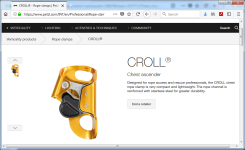DMM now say this:
Maximum Lifespan: Textile & Plastic Products ? 10 years from date of manufacture.
Metal Products ? no time limit.
Note: This may be as little as one use, or even earlier if damaged (e.g. in transit or
storage) prior to first use. For the product to remain in service it must pass a visual
and tactile inspection when considering the following criteria: fall arrest, general
wear, chemical contamination, corrosion, mechanical malfunction/ deformation,
cracks, loose rivets, loose strands of wire, frayed and/or bent wire, heat contamination
(over normal climatic conditions), cut stitching, frayed tape, degradation of tape
and/or thread, loose threads in tape, prolonged exposure to U.V., clear and readable
marking (e.g. marking, batch reference, individual serial numbers etc).
Where such products are permanently attached to other products in a system, please
refer to the manufacturer recommendations of the complete system.
17.2 Obsolescence: a product may become obsolete before the end of its lifespan.
Reasons for this may include changes in applicable standards, regulations, legislation,
development of new techniques, incompatibility with other equipment etc
Mike




